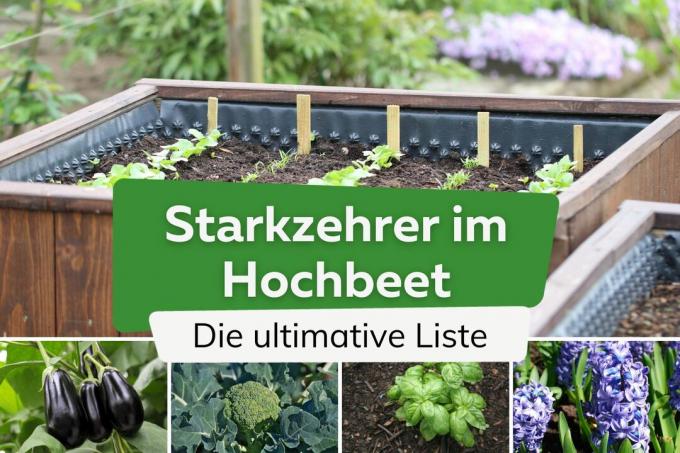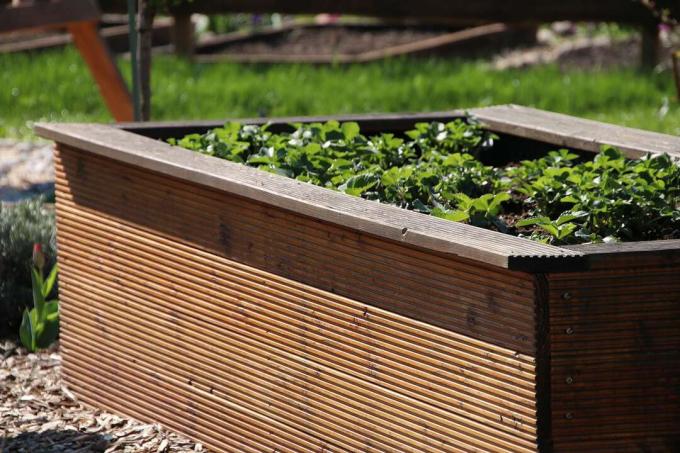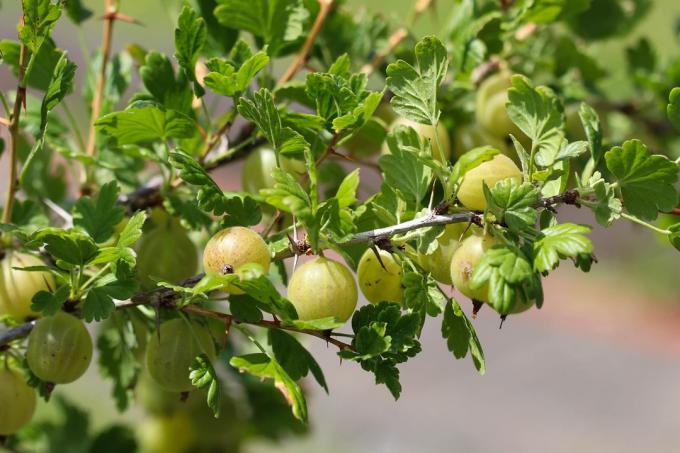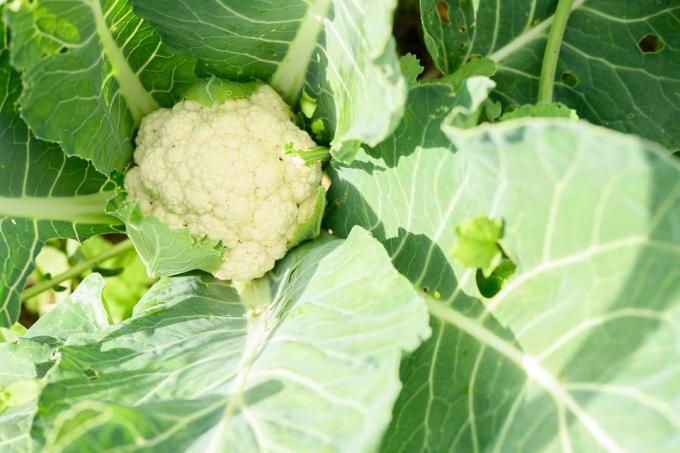
A raised bed in the garden offers the best growing conditions for vegetables and co. and guarantees a rich harvest without annoying back pain. Especially heavy consumers get enough nutrients in the first year after filling.
In a nutshell
- Raised bed - intensive cultivation possible in the smallest of spaces
- Heavy feeders need a lot of nutrients
- In the first year the soil in the raised bed is particularly rich in nutrients
- best conditions for heavy feeders
- heavy-duty plants such as various flowers, vegetables, herbs and fruit thrive
Table of contents
- What are heavy feeders?
- The first year
- Harsh plants
- Plant flowers
- fruit plants
- Herbs
- cabbages
- More vegetables
- cucurbits
- nightshade family
- frequently asked Questions
What are heavy feeders?
Each plant makes different demands on the location. The nutrient requirements of the individual plants are particularly different. They draw the nutrients they need for growth from the soil. Plants are mainly classified according to the amount of nitrogen they need for vegetative growth, i.e. for the formation of leaf mass and the associated photosynthesis. Plants that need a lot of energy in the form of nutrients for leaf and fruit formation are called
heavy feeder designated.These include plants that need to form leaves quickly, such as:
- cabbage (brassica)
- tomatoes (Solanum lycopersicum)
- cucumbers (Cucumis sativus)
- Corn (Zea mays)

During their growing season, they need around 25 grams of nitrogen per square meter. These quantities are withdrawn from the ground. Next to the There are heavy feeders, medium feeders and weak feeders. However, the boundaries between them are sometimes quite fluid.
The first year
A raised bed offers space for a wide variety of plants in the smallest of spaces. In the first year, after the raised bed has been filled, the rotting of the organic material inside the bed generates a great deal of heat from below. This is particularly the growth of heat-loving plants such as tomatoes, peppers or zucchini favored. In addition, the rotting is extremely nutrient-rich humus soil arises.

In the newly filled bed, the nutrient content is highest in the first two years. Therefore, with regard to crop rotation, only heavy feeders such as cabbage, courgettes, peppers, tomatoes or cucumbers should be planted in the raised bed in the first year. In this way it is possible to avoid nitrate accumulation in the raised bed. Medium feeders such as kohlrabi only follow in the second year (Brassica oleracea var. gongylodes L.), onions (Allium cepa) and salsify (Scorzonera hispanica) and in the third year weak eaters like beans (Phaseolus vulgaris), Peas (Pisum sativum) and salad (Lactuca sativa). These plants are more frugal in terms of nutrient requirements and use up the remaining nutrients in the raised bed.
A notice: The Compliance with crop rotation is important to prevent disease, poor harvests and soil fatigue. In cultivation, this means the chronological sequence of crop plants with different nutrient requirements, in the order of weak, heavy and medium consumers.
Harsh plants
A wide variety of heavy feeders can find a place in the raised bed, regardless of whether they are flowers, vegetables, nightshade and pumpkin plants, herbs or fruit.
Below is the ultimate list of the most common heavy feeders:
Plant flowers
Colorful flowers bring enough color to your garden and should therefore not be missing when planting in the raised bed for the first time.

- asters (Aster)
- bamboo (Bambusoideae)
- blue mock poppy (meconopsis)
- Chrysanthemums (chrysanthemum)
- dahlias (Dahlia)
- flame flowers (Phlox)
- Geraniums/Pelargoniums (Pelargonium)
- gladioli(gladiolus)
- hyacinths (Hyacinthus)
- Indian flower cane (Canna indica)
- imperial crowns (Fritillaria imperialis)
- lilies (Lilium)
- snapdragons (antirrhinum)
- Monbretia (Crocosmia)
- daffodils (narcissus)
- petunias (Petunia)
- delphinium (Delphinium)
- Rudbeckia (Rudbeckia)
- sun eye (Heliopsis)
- sunflower(Helianthus annuus)
- sun bride (Helenium)
- marigold (tagetes)
- steppe candle (Eremurus)
- hollyhocks (Alcea)
- tulips (Tulpia)
- water dost (eupatorium)
- ornamental cabbage (Brassica oleracea)
- ornamental onion (allium)
- two teeth (Biden's)
fruit plants
Fruit as a heavy feeder in the raised bed can also be grown in the first year. Especially for Children this is a good optionto introduce them to gardening.

- strawberries (fragaria)
- gooseberries(Ribes uva – crispa)
- currants (ribs)
Herbs
Cultivating your own herbs in the garden and then using them for grilling or cooking not only tastes good, but is also fun. As heavy feeders, these herbs can be placed in the raised bed for the first year.
- basil (Ocimum basilicum)
- borage (Borago)
- lovage(Levisticum officinale)
- fruit sage (Salvia dorisiana)
cabbages
Different types of cabbage not only fit perfectly into the kitchen, they also look good in your own garden.

- cauliflower (Brassica oleracea var. botrytis)
- broccoli (Brassica oleracea var. Italiana)
- butter cabbage (Brassica oleracea convar. capitata var. sabauda subvar. fimbriate)
- Chinese cabbage(Brassica rapa subsp. pekinensis)
- Everlasting Cabbage / Tree Cabbage (Brassica oleracea var. ramosa)
- Kale (Brassica oleracea var. sabellica)
- Jaroma cabbage / flat cabbage (Brassica oleracea convar. capitata var. alpha)
- Kohlröschen / Flower Sprouts (Brassica oleracea var. gemmifera "Flower Sprouts")
- Pak choi / Chinese collards (Brassica rapra subsp. chinensis)
- Palm cabbage / black cabbage (Brassica oleracea palmifolia DC.)
- Romanesco broccoli (Brassica oleracea 'Romanesco')
- Red cabbage (Brassica oleracea convar. capitata var. rubra L.)
- Cauliflower (Brassica oleracea var. gemmifera)
- cabbage (Brassica napus var. pabularia)
- cabbage (Brassica oleracea convar. capitata var. alpha)
- stem cabbage (Brassica rapa subsp. sylvestris var. esculenta)
- Tatsoi / leaf mustard (Brassica rapa convar. narinosa)
- white cabbage (Brassica oleracea convar. capitata var. alpha)
- Savoy cabbage (Brassica oleracea convar. capitata var. sabauda)
Tip: Cabbage needs a lot of nutrients to grow and should therefore only be planted in the same spot again after three years at the latest.
More vegetables
Other types of vegetables can also be used for the first planting as heavy feeders in the raised bed.

- artichokes (Cynara cardunculus var. scolymus)
- real spinach (Spinacia oleracea)
- celery root (Apium graveolens var. rapaceum)
- Leeks / Leek (Allium porrum)
- turnip (Brassica rapa subsp. rapa var. majalis)
- chard (Beta vulgaris subsp. vulgaris)
- carrots(Daucus)
- New Zealand spinach (Tetragonia tetragonioides)
- rhubarb (Rheum rhabarbarum)
- radish (Raphanus)
- Beets (Beta vulgaris)
- asparagus(Asparagus officinalis)
- celery (Apium graveolens var. dulce)
- sweetcorn (Zea mays)
- sugar beet (Beta vulgaris subsp. vulgaris)
cucurbits
The classic cucurbits are also among the heavy-consuming plants.
- chayote (Sechium edule)
- cucumbers (Cucumis sativus)
- pumpkins (cucurbita)
- watermelon(Citrullus lanatus)
- zucchini (Cucurbita pepo subsp. pepo convar. Giromontiina)
- cantaloupe melon (Cucumis melo)
Tip: They are particularly suitable for the edge rows in raised beds strawberries and cucumbers. The shoots can thus climb over the border and are not so quickly attacked by cucumber mold.
nightshade family
Nightshades get their name from the fact that they generally contain many substances that can lead to poisoning and death. They include, for example also the deadly nightshade.

- aubergine (Solanum melongena)
- Andean berry (Physalis peruviana)
- pineapple cherry (Physalis pruinosa)
- chili (capsicum)
- potatoes (Solanum tuberosum)
- Melon pear / pepino (Solanum muricatum)
- paprika (capsicum)
- pepperoni (capsicum)
- tobacco (Nicotiana)
- tomatoes(Solanum lycopersicum)
- tomatillos (Physalis philadelphica)
- sweet potatoes (Ipomea batatas)
frequently asked Questions
The raised bed consists of several layers. The height of the individual layers depends on the height of the raised bed. Rough cuttings from shrubs and trees (30 cm) are suitable as the bottom layer. This is followed by thin branches, chaff, lawn clippings, leaves and cardboard to a height of 20 cm, followed by mature compost soil (20 cm). The top layer then forms high-quality garden soil or soil. topsoil (20 cm). Finally, depending on the planting, a layer of special soil such as herb or vegetable soil can be applied.
Due to the rotting of the organic material, the material in the raised bed sags by 10 to 20 cm after about a year. In this case, the filling of the raised bed is filled with a new layer. Coarse compost should be used for this. If this is not available, the layer can also be replaced with garden soil. If the raised bed is used intensively, it is necessary to completely replace the entire filling after five years. The layers are then completely recreated.
After the harvest, it is necessary to to improve the ground. One is particularly good for this green manure with yellow mustard (Sinapis alba) or bee lover (phacelia). These plants supply the soil with the necessary nutrients. The main supply to the earth is nitrogen. Reseeding takes place in autumn. In the raised bed, the green manure loosens the soil and at the same time enriches it with new organic material.
Medium eaters have a not very high, but not exactly low nutrient requirement either, rather it is rather mediocre. They need between 10 and 25 g of nitrogen per m². They include endives (Cichorium endivia) and fennel (Foeniculum vulgare). However, need weak feeder only very small amounts of nitrogen, less than 10 g per m². This includes radishes (Raphanus sativus var. sativa), purslane (Portulaca oleracea) and lamb's lettuce (valerianella).
